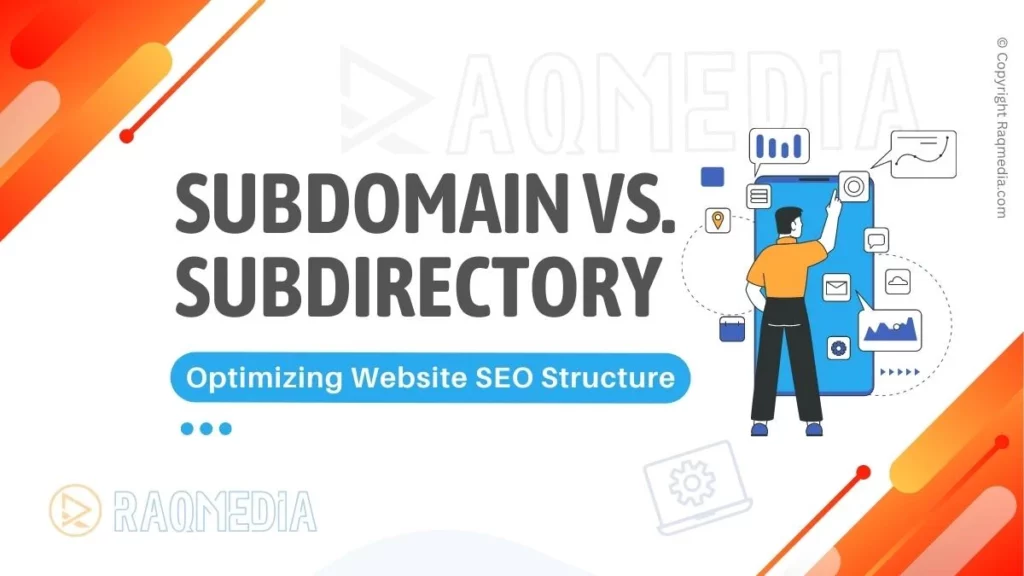Introduction:
In the ever-evolving landscape of search engine optimization (SEO), website structure plays a vital role in optimizing visibility and organic search performance. When it comes to organizing website content, the choice between using subdomains vs subdirectories is a crucial decision that can impact SEO outcomes.
In this article, we will explore the nuances of subdomain and subdirectory SEO, comparing their effects on website authority, keyword targeting, link equity, user experience, and more. Unlock the key to optimizing your website's structure for SEO: Discover the differences between subdomains and subdirectories, and learn how to make the most of them.
Understanding Subdomains vs Subdirectories SEO:

Before delving into their SEO implications, it is important to understand the fundamental differences between subdomains and subdirectories. A subdomain is a prefix that precedes the main domain and represents a distinct section of a website. For example, “blog.example.com” is a subdomain that hosts a blog section. On the other hand, a subdirectory is an extension of the main domain that follows a forward slash (“/”) and organizes content within the main website structure. For instance, “example.com/blog” is a subdirectory that houses the blog section within the main website.
SEO Considerations for Subdomains:
Subdomains can impact website authority, as search engines often treat them as separate entities. While subdomains offer the advantage of segmenting content and targeting specific keywords, they may dilute the overall domain authority. It is crucial to evaluate the pros and cons of using subdomains for SEO, analyzing case studies and successful strategies to understand their potential impact.
SEO Considerations for Subdirectories:
Subdirectories, being part of the main website, contribute to the overall domain authority. They help maintain a unified structure and consolidate link equity, which can positively influence SEO performance. However, it is important to consider factors such as content organization, URL structure, and maintenance when utilizing subdirectories for SEO. Exploring case studies and effective subdirectory SEO strategies provides valuable insights for implementation.
Keyword Targeting and URL Structure:
Both subdomains and subdirectories offer opportunities for keyword targeting. However, the approach differs in terms of relevance and URL structure. Careful consideration must be given to optimizing the URL structure, ensuring it aligns with SEO best practices and user-friendly design. By following keyword targeting best practices, websites can enhance their search visibility in both subdomains and subdirectories.
Link Equity and Domain Authority:
Link equity, the value passed through backlinks, plays a crucial role in SEO. Subdomains distribute link equity separately from the main domain, potentially impacting the overall domain authority. Subdirectories, on the other hand, consolidate link equity, benefiting the main domain's authority. Understanding the implications of link equity distribution in each approach is vital for effective SEO strategies.
Content Management and Maintenance:
Content organization and management are essential considerations for SEO. Subdomains provide a clear separation of content, making it easier to manage and update specific sections. Subdirectories, on the other hand, require careful structuring and organization within the main website. Maintenance considerations such as content updates and version control should also be factored in when choosing between subdomains and subdirectories.
International SEO Considerations:
For websites targeting international audiences, the choice between subdomains and subdirectories becomes even more critical. Implementing multilingual or country-specific versions requires careful consideration of the SEO impact. Evaluating geotargeting options, hreflang tags, and the implications of each approach on international SEO performance is crucial in making an informed decision.
User Experience and Website Structure:
User experience is a key factor in website design and SEO. Subdomains can provide a sense of separation and focus for specific content, potentially enhancing user experience. Subdirectories, on the other hand, maintain a unified structure, making navigation and exploration more intuitive. Striking the right balance between SEO considerations and user-friendly design is essential for maximizing the impact of website structure on user experience.
Case Studies: Subdomain vs Subdirectory SEO
Comparing Subdomains and Subfolders:
Examining real-world examples of successful subdomain and subdirectory SEO strategies provides valuable insights. Analyzing the outcomes of these case studies helps identify the strengths and weaknesses of each approach. By understanding the experiences and lessons learned from these cases, website owners can make informed decisions regarding their own SEO strategies.
Factors to Consider in Decision-Making:
When deciding between subdomain vs subdirectory for SEO, several factors should be taken into account. It is essential to align the decision with the website's goals and objectives, evaluate the existing website structure, and prioritize SEO strategies accordingly. By carefully weighing these factors, website owners can make an informed decision that aligns with their long-term SEO strategy.
Conclusion
The choice between subdomain vs subdirectory SEO is a crucial decision that can significantly impact search visibility and website performance. By understanding the distinctions, assessing SEO considerations, evaluating keyword targeting, link equity, content management, and user experience, website owners can make informed decisions that maximize the impact of website structure on SEO outcomes.
With continuous optimization and adaptation, websites can achieve enhanced search visibility and organic success in a competitive online landscape.










Unlock the key to optimizing your website’s structure for SEO: Discover the differences between subdomains and subdirectories, and learn how to make the most of them.
Confused about the differences between subdomains and subdirectories?
Learn how to optimize your website structure for SEO & get the most out of your site.
….
#SubdomainsVsSubdirectories #WebsiteStructureDebate #SEOComparison #URLHierarchy #ContentOrganization #WebsiteArchitecture #DigitalMarketingTips #DomainStrategy #WebsiteManagement #SEOAnalysis #WebDevelopment #TechnicalSEO #URLStructure #SiteNavigation #SEODebate #OnlineVisibility #WebsiteOptimization #DigitalStrategy #WebsiteDesign #WebTraffic #SEOInsights #SiteStructure #UserExperience #ContentManagement #WebsitePerformance #SEOBestPractices #TechnicalDebate #SearchEngineRankings #OnlinePresence #WebHierarchy